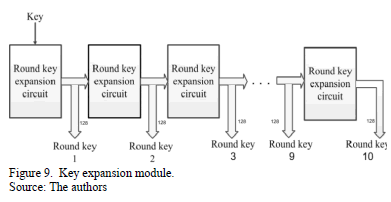The Advanced Encryption Standard (AES) has become synonymous with secure data transmission. Among its various modes of operation, counter (CTR) mode garners significant attention for its purported efficiency and security features. However, the assertion that AES-128 in CTR mode generates output that approximates true randomness warrants critical examination. This article delves into the structure of AES-128 CTR, evaluates the statistical properties of its output, and confronts the assumptions underpinning the so-called randomness of its ciphertext.
To understand the question of randomness, we must first dissect the mechanisms at play in AES-128 CTR mode. The process begins with a counter, a simple yet crucial component utilized to derive unique values for encryption. Each time a block of data is encrypted, the counter is incremented, ensuring that each block receives a distinct input. This characteristic is essential in preventing issues like block repetition, often detrimental in cryptographic applications.
However, the dependence on counter values leads us to an interesting paradox. While incrementing a counter seems logically sound, it raises concerns about predictability. If an adversary can observe the plaintexts and their corresponding ciphertexts, they might derive insights into the counter values based on known patterns or repetitions. This vulnerability illustrates an essential principle of cryptography: security relies on obscurity as much as on robustness.
Diving deeper, we find that true randomness is defined through properties such as uniform distribution and lack of discernible patterns. While AES-128 CTR mode does produce outputs that appear random, the underlying mechanics provide an avenue for discernment. Researchers have employed statistical tests to gauge randomness, revealing subtle biases within certain output sequences. This divergence from ideal randomness gives rise to skepticism regarding the ‘random-like’ nature of AES-128’s ciphertext.
Consider the scenario where two encryption sessions employ the same initial key and counter. The result leads to identical ciphertexts for those identical inputs. This determinism starkly contrasts with the expected behavior of a truly random system, which should yield distinct outputs under identical conditions. Hence, the resemblance of AES-128 CTR outputs to randomness erodes when dissected under scrutiny.
The implications extend beyond theoretical musings; they infiltrate pragmatic security considerations. In environments where numerous data blocks rely on a shared key or initialization vector, the risk of predictable output becomes especially pronounced. Under such situations, slight vulnerabilities can culminate in catastrophic breaches. Thus, while AES-128 CTR might function effectively in isolated circumstances, careful implementation is paramount in larger systems.
The mathematical underpinnings of CTR mode further complicate the perception of randomness. The encryption process applies a pseudo-random function (PRF), which is foundational to AES. While PRFs are designed to mimic random behavior, they do so based on deterministic algorithms. The inadequacies of such systems are illuminated in scenarios where an adversary knows or can guess key information. These insights can strip away the veneer of randomness, exposing patterns that can be exploited.
In a bid to reinforce the security of AES-128, practitioners often meld it with other cryptographic strategies. Techniques such as hashing and additional layers of encryption attempt to counteract the deterministic nature of the counter. Nevertheless, the intricate dance between efficiency and security often leads to compromises that can unintentionally reintroduce vulnerabilities. In particular, developers must remain vigilant against side-channel attacks, which exploit information inadvertently leaked during operations.
Another dimension emerges when examining the framework through which AES-128 is deployed. Context is crucial, as environments can vary significantly in their requirements for confidentiality and integrity. For instance, a robust approach in a low-risk setting may falter in high-stakes applications, such as banking or governmental communications. Disparate requirements necessitate customized security models that account for the idiosyncrasies of AES-128 CTR. Failure to adapt the cryptographic framework may result in a false sense of security.
Critics of AES-128 CTR often advocate for alternative encryption methods, such as AES-GCM or ChaCha20, both of which purport to enhance security by offering additional mechanisms for authentication alongside encryption. Their architectures might inherently mitigate some of the issues observed in CTR mode, providing stronger guarantees against the predictability and biases that plague AES-128. Nevertheless, transitioning to these newer paradigms demands comprehensive evaluations of existing systems and a robust understanding of their respective vulnerabilities.
To conclude, the assertion that AES-128 CTR produces truly random-like outputs remains an oversimplification of a multifaceted subject. While it encapsulates various commendable encryption characteristics, ambiguities persist regarding its deterministic elements and predictability. In the pursuit of cryptographic safety, a nuanced approach is essential—one that appreciates the inherent limitations of AES-128 CTR and the necessity for vigilant and contextually sound implementation practices. The dialogue surrounding cryptography is not merely academic; it possesses immense repercussions for the landscape of digital security, making clarity and thorough understanding indispensable.









Leave a Comment